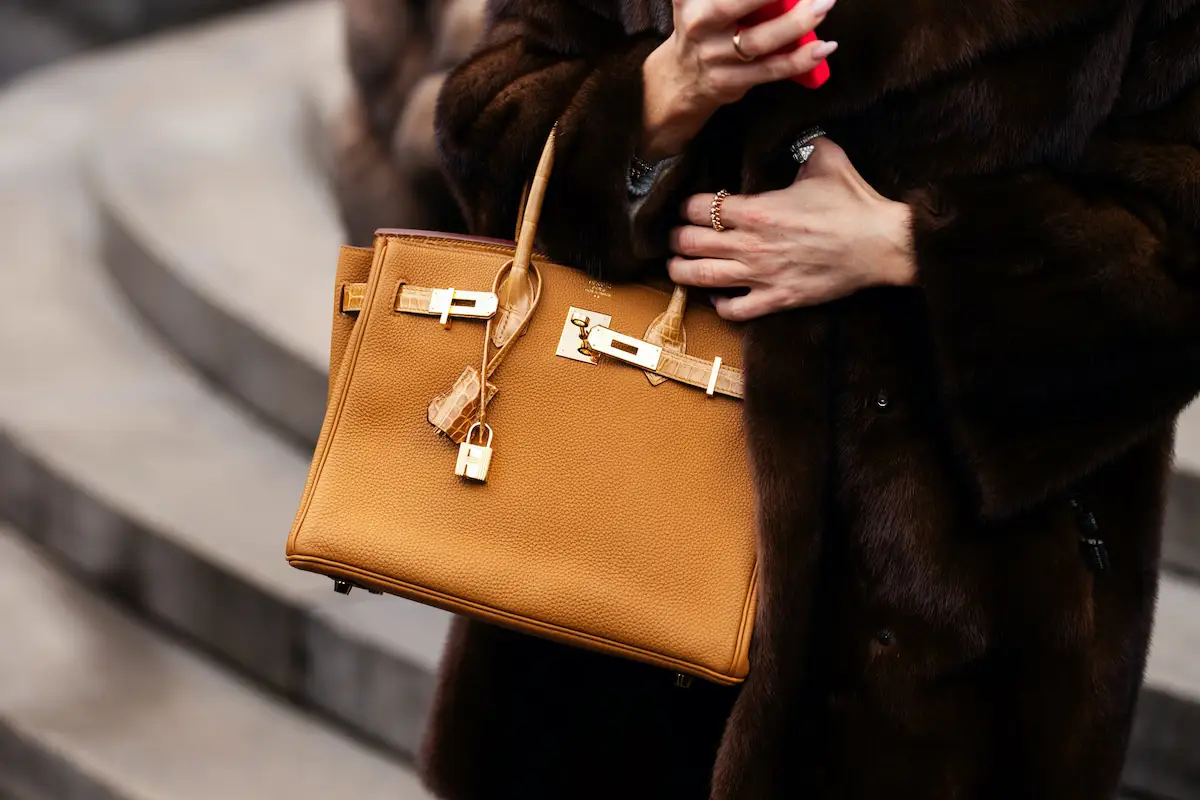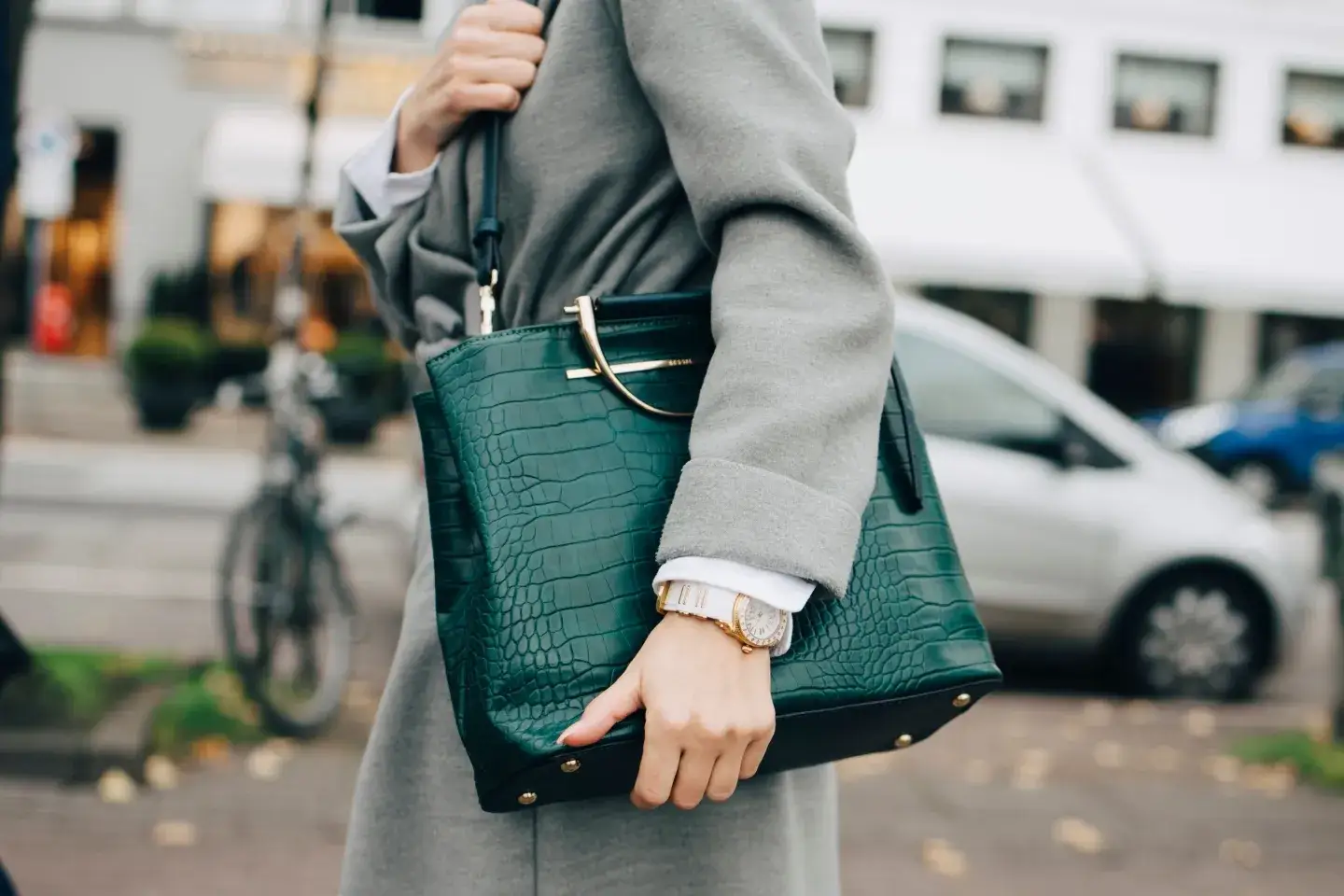
Ladies, we recently shared with you the elegant ring-handle handbag in Women’s Ring Handle Handbags: Carry Confidence, Carry Style. When my younger sister donned one last Sunday, it was magnificent. Apologies, sister—but it wasn’t the real deal. That got me thinking: what makes a designer bag “designer,” and how to tell a fake designer bag from an authentic one?
If you have ever been in my shoes, wondering whether that stunning handbag you just spotted is authentic or simply a well-crafted knockoff, this is for you.
What Defines a Designer Handbag?
A designer handbag isn’t just about the label; it’s about the craftsmanship, premium materials, exclusivity, and heritage. Think Louis Vuitton, Chanel, Hermès, and Gucci—these brands don’t just sell bags; they sell artistry, status, and quality…In my eyes, though, it is mostly a sale of status. Each piece undergoes meticulous craftsmanship, from stitching to hardware, and is often made in limited quantities to maintain exclusivity. So, if you’re eyeing a “designer” bag, but it seems suspiciously cheap or mass-produced, you might want to take a closer look.
Ironically, most people always know when they purchase these products. A post on by-then Twitter once showed the brand “Drew House” by Justin Bieber announcing plans to supply the African market that year. But at the time of that announcement, Drew attire was already a hot cake in Uganda, selling at very reasonable prices—anywhere between UGX 50,000 to 120,000.
Of course, the price of a Drew shirt is about 500k minus shipping fees… makes one wonder who was making and supplying the brand
How to Differentiate an Authentic Designer Handbag from a Fake
(1). Material & Craftsmanship – Feel the Difference
First and foremost, real designer bags are made from high-quality materials like premium leather, exotic skins, or durable canvas. Run your fingers across the surface—it should feel smooth, supple, and rich. Fake bags often use synthetic leather that feels plasticky or too rigid.
And if that doesn’t quite sound any alarms, examine the stitching. Authentic bags have precise, even stitches with no loose threads, while counterfeits often have messy or inconsistent stitching…they are mass-produced after all. One way to spot this is to carefully examine the inside of the bag. Was there any finishing done? Have the extremities of the materials used been neatly trimmed and secured? Many a fake product will focus on fooling you from a far, mostly working on the exterior and hiding their shoddy work in the interior of the handbag.
Related Stories: Why Ugandans Can’t Live Without Gossip – Olugambo!
Related Stories: How to Send Photos in Document Format on WhatsApp Using iPhone
(2). Hardware – The Weight Tells the Story
Ever picked up a luxury bag and noticed how the zippers, buckles, and locks feel weighty? That’s because authentic designer bags use high-quality metals like brass or gold-plated hardware. Fake bags? Not so much. Their hardware is often lightweight, flimsy, or even plastic-coated to mimic the original product, and we can agree that every lady has experience with this—you pick up a handbag laced with hardware everywhere, but the weight? hardly noticeable.

(3). Logos & Branding – Spot the Subtle Details
Luxury brands are very particular about their logos, it is their identity. Whether it’s the interlocking CCs of Chanel or the LV monogram of Louis Vuitton, everything from the font to the alignment is intentional. A telltale sign of a fake is a logo that’s slightly off—maybe the spacing isn’t right, the letters look stretched, or the placement feels unnatural. Take this, those minor details matter.
(4). Serial Numbers & Date Codes – The Identity Card of the Bag
Most designer brands use serial numbers, date codes, or RFID chips for authenticity. Chanel, for example, has a unique serial number inside the bag, while the Louis Vuitton use date codes that indicate the place and time of manufacture. No code? Wrong format? That’s a red flag, you are probably supporting some dude’s hustle and feeling mighty in it.
(5). Pattern & Symmetry – The Design Never Lies
Luxury brands take great care in ensuring that patterns and monograms align perfectly. If the bag has a monogram print that’s cut off at the seams, misplaced, or inconsistent, you’re probably dealing with a fake. Designer bags have near-perfect symmetry and attention to detail in their pattern placement because they cater to a rich clientele. And it’s understandable—if you were to buy a 600,000 Ugandan shillings handbag, I’m sure you would want it to be meticulously neat, the stitching flawless at the front and inside, the hardware authentic, and the prints darn well consistent.
Related Stories: Why Are Scars So Attractive? An Introvert’s Perspective on Marks That Tell a Story
Related Stories: How to Impress a Man: Ladies, Do These and He’s All Yours!
(6). Smell Test – Yes, Your Nose Knows!
Weirdly enough, authentic bags have a distinct smell. This seemed doubtful until a visit to the Bata store on Kampala Road proved otherwise (they actually have nice handbags and belts too). Real leather has a natural, rich aroma, while counterfeit bags often have a strong chemical or plastic-like scent.
Fun fact: Vintage Louis Vuitton bags are said to have a scent similar to Crayola crayons, while Hermès bags carry a more refined leather scent. So, take a sniff—perhaps your nose will give a hint.
The Art of Authenticating Designer Handbags: Spotting Real vs. Fake
That said, designer handbags are more than just accessories—they’re investments in one way or the other, I mean, 900k for a Chanel handbag? There has to be something in there somewhere.
Related Stories: Fun Things to Do on Your Birthday – Best Ideas for Both Introverts and Extroverts
Related Stories: The Key to Optimal Experience and Personal Growth – Finding Flow
Well, just like with any high-value item, counterfeits will always try to imitate the original. The next time you’re out shopping for a luxury handbag, remember these tips to ensure you’re getting an authentic piece—or perhaps use them to find a high-quality knockoff that won’t immediately scream “downtown hustle” when you wear it.
Stay stylish and shop smart! Here are 7 Safety Tips for Shopping in Downtown Kampala.
You might also find Second-Hand Fashion in Uganda: The Magic of ‘Mivumba’ Clothes Interesting.